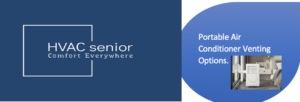Troubleshooting Goodman Furnace 3 Flashes.
When a Goodman furnace displays three flashes on its diagnostic LED indicator, it typically indicates a pressure switch issue.
The pressure switch is an important safety device in a furnace that ensures the proper operation of the ventilation system.
At a glance: Goodman furnace displays three flashes could be due to Blocked Venting Cause,Pressure Switch Failure,Combustion Air Supply or Condensate Drain Blockage.
If the pressure switch detects that the venting system is not functioning correctly, it will prevent the furnace from starting to avoid potential safety hazards.
Also read>>>>Goodman Air Conditioner Problems.
Why Goodman Furnace display 3 Flashes.
1.Blocked Venting Cause.
A blocked or restricted venting system is a common issue that can trigger the pressure switch error in a Goodman furnace. The venting system is crucial for safely removing combustion byproducts from the furnace and expelling them outdoors. If there are any obstructions or issues in this system, it can interfere with the proper operation of the furnace.
Troubleshooting and Fix:
- Visual Inspection: Begin by visually inspecting the vent and exhaust pipes. Look for any visible signs of blockages, such as debris, leaves, ice, or bird nests. These can obstruct the flow of exhaust gases.
- Fix: If you find any obstructions, carefully remove them using a gloved hand or appropriate tools, ensuring that you do not damage the venting components in the process.
- Check the Flue: Ensure that the flue pipe (the pipe that carries exhaust gases from the furnace to the outdoors) is securely connected and not damaged.
- Fix: If the flue pipe is disconnected or damaged, reconnect and seal it properly. If the pipe is damaged beyond repair, it may need to be replaced.
- Condensation Issues: Some high-efficiency furnaces produce condensate as a byproduct. If the condensate drain line is blocked, it can impact the pressure switch operation.
- Fix: Inspect the condensate drain line for any clogs or blockages. If you find any, clear them to allow proper drainage. Also, make sure the drain line is properly sloped to ensure water flows out.
- Vent Termination: Check the termination point of the venting system outside your home. Ensure that it’s clear and not obstructed by snow, ice, or other objects.
- Fix: Clear any obstructions from the vent termination point to allow for proper exhaust of combustion gases.
- Inspect Air Intake: The furnace requires a supply of combustion air for proper operation. If the combustion air intake is blocked, it can affect pressure within the system.
- Fix: Ensure that the combustion air intake is clear of obstructions and functioning as designed. Some systems have separate air intake and exhaust pipes, so check both for obstructions.
- Professional Help: If you’ve checked the venting system and cannot identify any visible obstructions, or if you are uncomfortable performing these checks, it’s advisable to seek the assistance of a qualified HVAC technician.
Also read>>>Rheem Air Conditioner Problems.
2.Pressure Switch Failure Cause.
The pressure switch in a furnace is a safety device designed to ensure that the venting system is functioning correctly. If it detects issues with the pressure in the system or if the switch itself is malfunctioning, it can prevent the furnace from starting. Here’s how to troubleshoot and fix this issue:
Troubleshooting and Fix:
- Inspect Tubing and Ports: The pressure switch is typically connected to the furnace by small plastic or rubber tubing that runs to various ports on the venting system. Inspect these tubes for any kinks, cracks, or disconnections. Also, check the ports on the furnace and venting system for obstructions.
- Fix: If you find any issues with the tubing, replace or repair it as necessary. Clean any debris from the ports and ensure a proper connection.
- Test the Switch: Use a multimeter to check the continuity of the pressure switch. This can help determine if the switch is functioning correctly.
- Fix: If the multimeter test indicates that the pressure switch is not working, it may need to be replaced. Pressure switches are sensitive components, and if they fail, they should be replaced with the exact same model specified by the furnace manufacturer.
- Check for Draft: The pressure switch relies on the draft created by the combustion and exhaust gases to operate correctly. If the draft is insufficient, it can lead to a pressure switch error.
- Fix: Ensure that the venting system, including the flue, is properly installed and free of obstructions. Verify that the vent termination point outside the home is not blocked. If draft issues persist, it may require professional assessment to correct the venting system.
- Verify Combustion Air Supply: A lack of adequate combustion air supply can also affect pressure in the system, potentially leading to a pressure switch error.
- Fix: Ensure that the combustion air supply is not blocked or restricted. Some furnaces have a separate combustion air intake; make sure it is clear of obstructions. Additionally, verify that other appliances in the home (like exhaust fans) are not negatively impacting the air supply to the furnace.
- Consult a Professional: If you are unable to diagnose or fix the pressure switch issue, it’s recommended to contact a qualified HVAC technician. They have the expertise and tools to properly diagnose and repair pressure switch problems.
Also read>>>Goodman Furnace Code F02.
3.Combustion Air Supply Cause.
A lack of an adequate supply of combustion air to the furnace can lead to problems with the pressure switch. The furnace requires a proper balance of oxygen for efficient and safe combustion. If the combustion air supply is insufficient, it can trigger the pressure switch to open as a safety precaution.
Troubleshooting and Fix:
- Inspect Air Intake: Begin by locating the combustion air intake on your furnace. This is where the furnace draws in the air needed for combustion. Ensure that this intake is clear of any obstructions.
- Fix: If you find any debris, blockages, or foreign objects around the air intake, remove them to allow for proper air supply.
- Ventilation Requirements: The furnace needs to meet specific ventilation requirements, which include the size of the air intake and the proximity of any potential obstructions. Check your furnace’s installation manual to verify that the combustion air supply meets these requirements.
- Fix: If you find that the air intake doesn’t meet the manufacturer’s specifications, consult a professional HVAC technician to make necessary adjustments or modifications.
- Check Other Appliances: Some homes share the combustion air supply with multiple appliances like water heaters, clothes dryers, and other gas-powered devices. These appliances can compete for the available oxygen.
- Fix: Ensure that other gas appliances in your home are not running simultaneously with the furnace, especially in a confined space. This may require adjusting the schedule for using different appliances to prevent conflicts.
- External Factors: Consider external factors such as weather conditions and outdoor obstructions. For example, heavy snowfall or debris around the air intake or exhaust vents can impede proper combustion air intake.
- Fix: Clear any snow or debris from around the air intake and exhaust vents to ensure an uninterrupted flow of air.
- Consult a Professional: If you have checked the combustion air supply and cannot identify any issues, or if you are uncomfortable making adjustments, it’s advisable to contact a qualified HVAC technician.
4.Condensate Drain Blockage Cause.
Some high-efficiency Goodman furnaces generate condensate as a byproduct of the combustion process. This condensate must be drained properly to prevent issues. If the condensate drain line becomes blocked, it can disrupt the drainage process, potentially affecting the pressure in the furnace system and triggering the pressure switch error.
Also read>>>Carrier Furnace Yellow Light Codes.
Troubleshooting and Fix:
- Locate the Condensate Drain: First, locate the condensate drain line and its components. High-efficiency furnaces often have a condensate drain line, which can be a PVC pipe that exits the furnace.
- Fix: Ensure that the condensate drain line is properly connected and that there are no visible disconnections or damage to the pipe.
- Inspect for Blockages: Carefully examine the condensate drain line for any blockages or obstructions. It’s not uncommon for debris, dirt, or algae to accumulate inside the line over time, leading to a blockage.
- Fix: If you find any blockages, carefully remove them. You can use a small brush, a pipe cleaner, or a shop vacuum to clear the blockage. Ensure the line is clean and unobstructed for proper drainage.
- Check the Drain Trap: Furnaces typically have a drain trap that prevents backflow of air or condensate into the furnace. Make sure the drain trap is clean and free of debris.
- Fix: Clean the drain trap if it appears to be obstructed. Ensure it’s properly installed to maintain the correct water seal.
- Flush the Line: If you suspect that the condensate drain line is partially clogged, you can try flushing it with a mixture of water and vinegar. This can help clear minor blockages caused by mineral buildup or algae growth.
- Fix: Pour a mixture of water and vinegar into the drain line and let it sit for a while to dissolve any blockages. Follow with a thorough flush of clean water to ensure the line is clear.
- Professional Help: If you’ve checked the condensate drain line and are unable to diagnose or fix the issue, or if the blockage persists, it’s recommended to contact a qualified HVAC technician.
Frequently Asked Questions (FAQs).
Why is my Goodman furnace showing 3 flashes on the diagnostic LED?
A Goodman furnace displaying 3 flashes on the diagnostic LED typically indicates a pressure switch issue. This can occur due to various reasons, including blocked venting, pressure switch failure, inadequate combustion air supply, or condensate drain blockage. It’s a safety feature to prevent the furnace from starting if there are potential safety hazards.
How can I troubleshoot a blocked venting issue in my Goodman furnace?
To troubleshoot a blocked venting issue, follow these steps:
- Visually inspect the vent and exhaust pipes for obstructions like debris, ice, or bird nests.
- Check the flue for secure connections and no damage.
- Examine the condensate drain line for blockages.
- Ensure the vent termination point outside is clear of obstructions.
- Verify that the combustion air supply is not blocked or restricted.
- If unsure or uncomfortable, contact a professional HVAC technician for assistance.
What should I do if the pressure switch in my Goodman furnace is malfunctioning?
If the pressure switch is malfunctioning, you can take these steps:
- Inspect the tubing and ports connected to the pressure switch for kinks, cracks, or disconnections.
- Test the pressure switch using a multimeter to check for continuity.
- Ensure proper draft and ventilation for the furnace.
- Verify that there’s enough combustion air supply and no competition with other gas appliances.
- If the pressure switch is found to be faulty, replace it with the exact model specified by the manufacturer.
- If needed, consult a professional HVAC technician for further diagnosis and replacement.
How can I address a condensate drain blockage in my high-efficiency Goodman furnace?
To address a condensate drain blockage, you can:
- Locate the condensate drain line and ensure it’s properly connected.
- Inspect for blockages or obstructions and remove them.
- Check the drain trap and clean it if necessary.
- Flush the line with a water and vinegar mixture to clear minor blockages.
- If you’re unable to resolve the issue or blockages persist, seek professional assistance from an HVAC technician who can diagnose and address the problem effectively and safely.
Conclusion.
Understanding and addressing the causes of a Goodman furnace displaying 3 flashes on the diagnostic LED is essential for maintaining a safe and efficient heating system.
Whether it’s blocked venting, pressure switch malfunctions, combustion air supply issues, or condensate drain blockages, proper troubleshooting and, if needed, professional assistance are key to resolving these common furnace problems and ensuring reliable performance.









